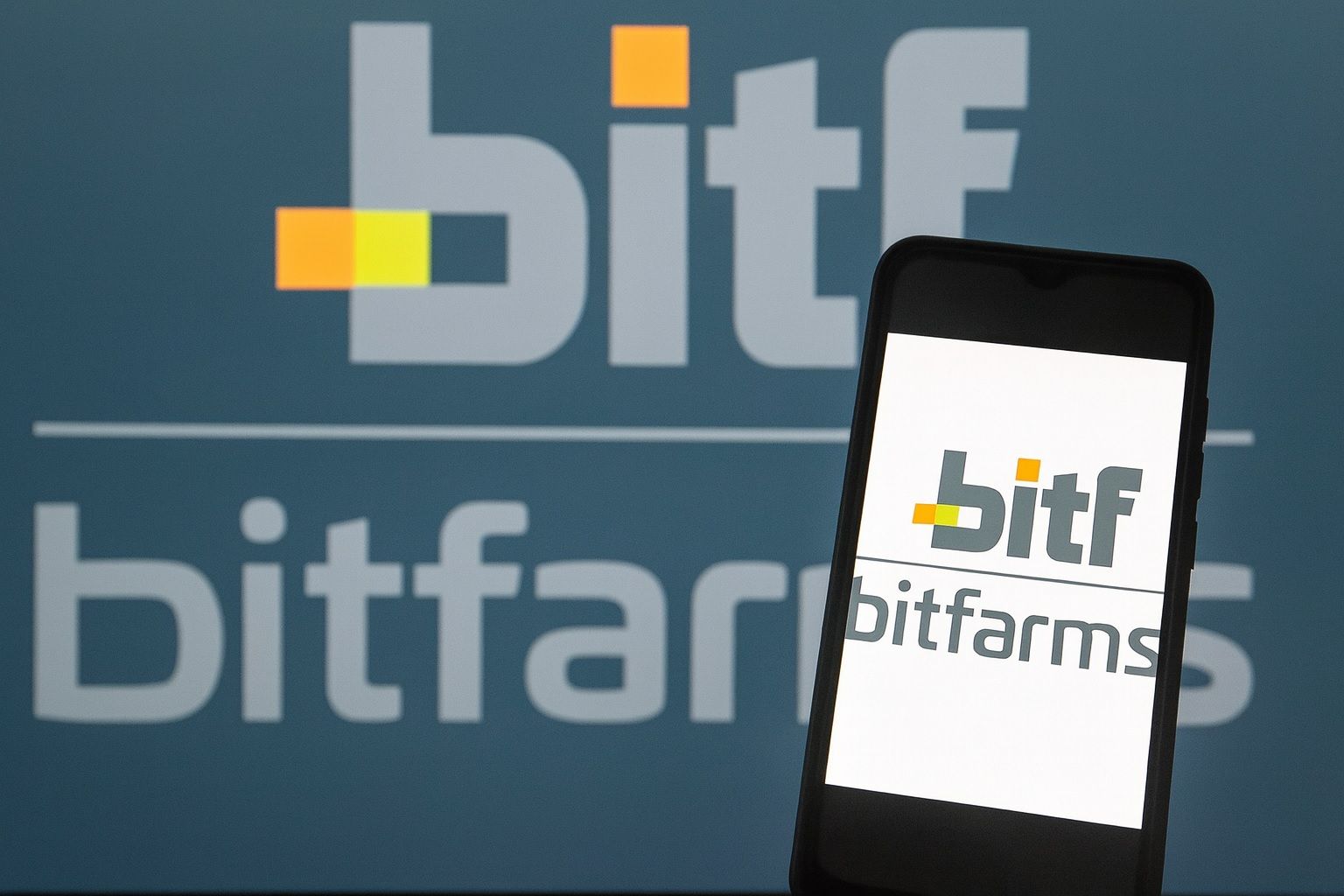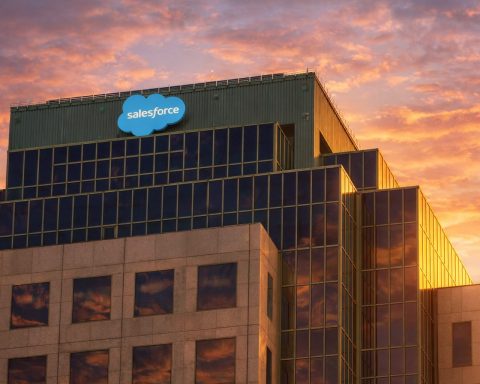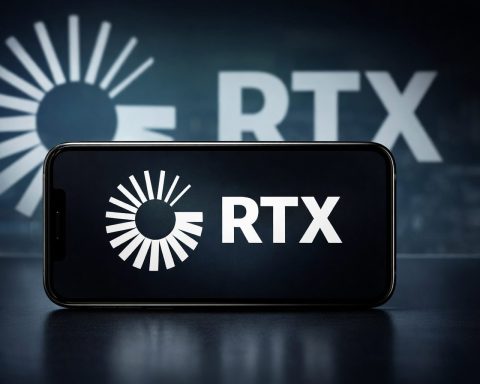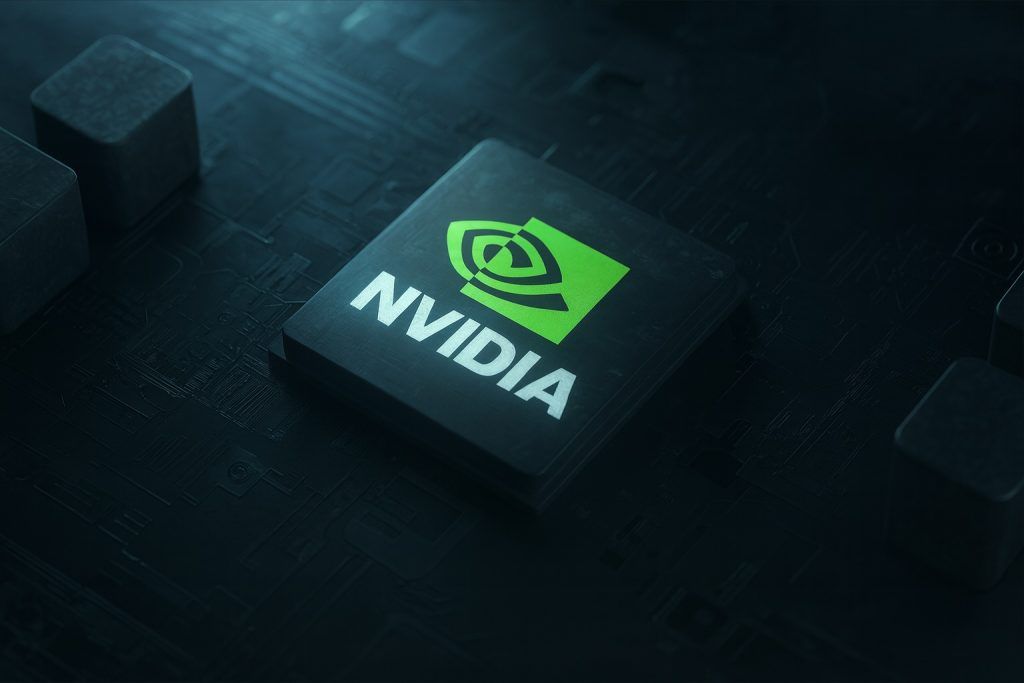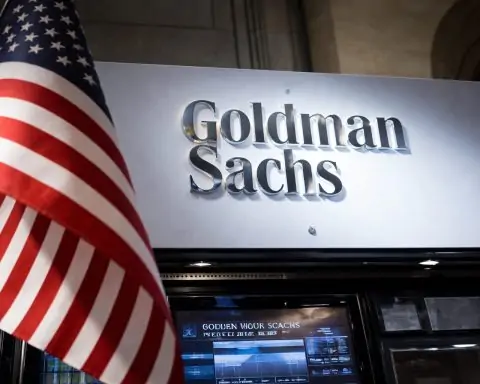- Roller-Coaster Ride:Bitfarms Ltd. (NASDAQ: BITF) traded around $4.10 as of Oct. 26, 2025 after a wild week [1]. Shares hit a 52-week high near $6.20 on Oct. 14, then plunged ~40% to $3.94 by Oct. 22 amid crypto volatility [2]. Even after the pullback, BITF remains up over +140% year-to-date [3], dramatically outperforming the broader market.
- Bitcoin’s Boost (and Jitters): A Bitcoin price surge to record highs fueled Bitfarms’ rally. BTC spiked above $125,000 in early October – an all-time high [4] – propelled by nearly $6 billion of ETF inflows in one week as institutional money poured into new Bitcoin funds [5] [6]. Higher Bitcoin prices directly lift miners’ profit margins, boosting stocks like BITF. However, crypto’s notorious volatility resurfaced mid-month: Bitcoin swiftly slid from ~$122K to ~$104K, and Bitfarms’ stock dropped 12% in a single day (Oct. 22) to $3.94 [7], marking its fifth straight daily decline.
- $500 M Cash Infusion for AI Pivot: Bitfarms seized the market momentum to raise $500 million via convertible senior notes due 2031 at a low 1.375% interest [8]. The debt offering was upsized from $300M to $500M (with a $588M overallotment if fully exercised) amid strong demand [9]. Management hailed the financing as a “tremendous success” that provides “financial firepower” to fund Bitfarms’ expansion into high-performance computing (HPC) and AI data centers [10]. Proceeds will fuel a new 350 MW campus in Pennsylvania dedicated to AI and cloud computing, part of Bitfarms’ strategic pivot beyond Bitcoin mining [11].
- Leadership Shakeup: Alongside its tech pivot, Bitfarms announced a C-suite change. Longtime CFO Jeff Lucas will retire on Oct. 27, 2025, and former Lazard banker Jonathan Mir has been appointed as the new CFO [12]. CEO Ben Gagnon says this leadership move positions Bitfarms to “execute on our HPC/AI growth strategy” and rebrand as a broader “digital infrastructure” provider – not just a Bitcoin miner [13]. Mir’s capital markets experience is expected to help Bitfarms navigate its next phase of growth.
- Crypto Miner Frenzy: Bitfarms’ rise comes amid a broader 2025 crypto-mining stock boom. Rivals Marathon Digital (MARA) and Riot Platforms (RIOT) have also soared in tandem with Bitcoin’s climb. Marathon’s stock jumped almost 10% in one day last week (now near $22), and Riot’s market cap swelled past $7 billion as BTC hit new highs [14]. Smaller miners like Hut 8 and Cipher enjoyed double-digit gains as well [15]. The tide turned with Bitcoin’s mid-October dip, which dragged down miners across the board, underscoring the sector’s sensitivity to crypto prices.
- Experts Split on Outlook:Wall Street is cautiously bullish on BITF. Seven out of eight analysts covering the stock rate it a “Buy,” yet the average 12-month price target is only ~$4.35, barely 10% above recent levels [16]. Some bulls have far higher targets – Northland Capital recently went as high as $7.00, citing Bitfarms’ “disciplined finances” and its HPC pivot as key strengths [17]. One independent research firm, however, slapped a Sell rating (D–) on BITF, arguing the stock’s meteoric rise is overextended relative to fundamentals [18] (Bitfarms is still unprofitable, losing $29M on $78M revenue in Q2 2025 [19]). Technical analysts note $4 as a critical support zone after the recent drop, with $6.50–$7.00 as the next resistance. A decisive breakout above $7 could even “open the path toward $12,” according to one chartist, aligning with BITF’s prior all-time highs [20] [21].
- Crypto Market Wildcards: The crypto market backdrop remains pivotal to Bitfarms’ fate. Bitcoin is still +15% in 2025 [22], and many industry watchers remain optimistic on its trajectory. Standard Chartered recently projected BTC could reach $135K–$150K in the near future if current trends persist [23]. Marathon’s CEO Fred Thiel is even more bullish, predicting Bitcoin could approach $200K by late 2025 if momentum continues [24]. Such forecasts, if realized, would greatly boost miners’ fortunes. Caution abounds, however – famed investor Robert Kiyosaki has warned of a potential 50% crypto crash before the next big rally [25]. Analysts also note that after the initial ETF-fueled euphoria, a “lack of new catalysts” could stall crypto’s momentum in the short term [26]. Bitfarms’ ability to sustain its stock gains likely hinges on Bitcoin’s stability and the company’s execution of its new AI-centric initiatives.
BITF Stock Soars, Then Swoons in Volatile October
Bitfarms shareholders have experienced whiplash this month. The stock surged to a 52-week high of nearly $6.20 on October 14 amid crypto market euphoria, then swiftly tumbled about 40% over the next week [27]. By October 22, BITF hit an intraday low of $3.94, capping a five-session losing streak [28]. It did stabilize toward week’s end – as of the market close on Oct. 24, Bitfarms hovered around the $4.00–$4.10 level [29] [30], indicating some support emerging just above $4.
Despite these swings, Bitfarms has delivered staggering gains in 2025. Even after the pullback, the stock is still up roughly +150% year-to-date [31]. (At its mid-October peak, BITF had briefly been up over +300% YTD, before giving back some of those gains.) This far outpaces the broader market and underscores how tightly Bitfarms’ fortunes are tethered to Bitcoin. As Bitcoin’s price goes, so goes BITF – often with leverage. When crypto sentiment is hot, miners can skyrocket; when the crypto market corrects, miners tend to crater even harder. Bitfarms’ October roller coaster is a textbook example of this high-beta behavior.
Major Moves: $500M Note Deal Funds an AI Data Center Pivot
The dramatic stock action coincided with transformative corporate developments for Bitfarms. In mid-October, the company pulled off a massive capital raise that will bankroll its expansion beyond traditional Bitcoin mining. On Oct. 16, Bitfarms announced it priced an upsized offering of $500 million in convertible senior notes due 2031 [32]. Initially launched as a $300M offering, heavy investor demand led Bitfarms to boost the deal to $500M (with an option for buyers to purchase an additional $88M, potentially bringing gross proceeds to $588 million) [33]. The notes bear a low 1.375% interest rate, reflecting strong confidence from lenders. Notably, the conversion price is about $6.86 per share, a ~30% premium to BITF’s pre-deal trading price [34] [35]. Bitfarms also entered capped call transactions to effectively cap dilution up to a share price of ~$11.88 (125% above the stock’s pre-deal level) [36]. These hedges should protect existing shareholders if the converts eventually turn into equity, although the banks facilitating the capped calls may trade BITF stock to hedge their positions – possibly adding some near-term volatility [37] [38].
Why raise half a billion now? Bitfarms is pivoting into the booming field of high-performance computing (HPC) and AI hosting. The company is channeling the funds into building a 350-megawatt data center campus in Pennsylvania focused on AI, cloud computing and other HPC workloads [39]. Management views this as a natural evolution: leveraging Bitfarms’ expertise in running large-scale, energy-intensive data centers (honed through crypto mining) to serve the exploding demand for AI compute power. “Financial firepower” from the note sale will accelerate construction of the new campus, which could make Bitfarms a significant player in the AI infrastructure space [40]. The pivot also diversifies Bitfarms’ business beyond the volatile economics of Bitcoin mining.
This isn’t Bitfarms’ first foray outside pure crypto mining – earlier in October, the company converted a private credit facility with Macquarie Group into a $300M project financing specifically to advance its Panther Creek data center in Pennsylvania [41]. In doing so, Bitfarms drew an extra $50M (bringing $100M total drawn) to fast-track equipment orders and construction prep at Panther Creek [42]. CEO Ben Gagnon touted that restructuring as giving Bitfarms “greater flexibility and faster access to capital” to pursue its HPC ambitions [43]. A managing director at Macquarie, Joshua Stevens, agreed: “Pennsylvania is quickly emerging as a new AI hub… Bitfarms is well-positioned to deliver state-of-the-art digital infrastructure for prospective clients,” he said, endorsing the company’s strategy shift [44].
In tandem with the growth plan, Bitfarms is refreshing its leadership. The company announced on Oct. 14 that CFO Jeff Lucas will step down effective Oct. 27, 2025, after four years steering Bitfarms’ finances. His successor, Jonathan Mir, brings over 25 years of investment banking experience, most recently as a Managing Director in Bank of America’s Natural Resources and Energy Transition group [45] [46]. Mir also spent two decades at Lazard focusing on power and infrastructure finance [47]. Bitfarms said Lucas will remain as an advisor through early 2026 to ensure a smooth handoff [48] [49]. CEO Gagnon noted that Mir’s appointment comes as Bitfarms rebrands itself as a “digital infrastructure” provider, signaling to investors that it’s more than just a crypto miner [50]. Gagnon stated the new CFO’s expertise will help Bitfarms “execute on our HPC/AI growth strategy” and manage the large influx of capital effectively [51]. In short, Bitfarms is gearing up – financially and organizationally – to pursue a bold growth agenda outside the confines of Bitcoin mining.
Bitcoin Rally Powers Crypto Miners – and Tests Their Nerves
Bitfarms’ recent ascent has come against the backdrop of a resurgent Bitcoin. The world’s largest cryptocurrency entered “Uptober” 2025 with a bang: on October 5, Bitcoin’s price ripped past its previous peak to a new all-time high above $125,000 [52]. (Its prior record was ~$124,500 set in August [53].) This rally was fueled by a confluence of factors. Key among them: the approval and launch of several spot Bitcoin ETFs, which unleashed a wave of institutional money into crypto. In the first week of October alone, crypto-focused ETFs saw roughly $5.95 billion of inflows – the largest weekly inflow on record [54] [55], per CoinShares data. Bitcoin funds accounted for over half of that haul (around $3.5B) as investors rushed for exposure [56]. “This level of investment highlights the growing recognition of digital assets as an alternative in times of uncertainty,” noted James Butterfill, CoinShares’ research head, commenting on the record inflows [57]. Indeed, with a friendlier U.S. regulatory tone under President Donald Trump and rising institutional adoption, Bitcoin has been on a tear [58]. By October 5, it touched $126,000 intraday [59], and by early October Bitcoin had logged eight consecutive daily gains – a streak not seen in years [60].
This Bitcoin boom directly turbocharged crypto mining stocks. Miners earn more revenue when Bitcoin’s price is high, yet their costs (electricity, operations) remain relatively fixed – a recipe for enhanced profits during bull runs. Investors, accordingly, bid up miner equities in anticipation. Bitfarms’ ~500% surge from late summer into mid-October (from about $1 to over $6) was driven largely by this dynamic [61]. In fact, Bitfarms’ 315% year-to-date climb (and 400% jump since September) has been explicitly tied to its “pivoting the business model to AI infrastructure,” which excited the market, plus Bitcoin’s rally providing a favorable backdrop [62]. Peers enjoyed similar windfalls: Industry leader Marathon Digital (MARA) saw its stock leap by mid-October, and Riot Platforms (RIOT)’s valuation ballooned to multi-billion-dollar levels [63]. Even second-tier miners like Hut 8 (HUT), Cipher Mining (CIFR), and others rode the wave with double-digit percentage gains [64].
However, the volatile nature of crypto means feast can turn to famine quickly. Around October 17–19, Bitcoin’s price abruptly pulled back on macroeconomic jitters (profit-taking set in amid concerns about global bond yields and war in the Middle East, according to market analysts). BTC fell from the $120K+ zone down to around $104K at the trough of this dip [65]. This ~15% retracement in Bitcoin triggered an outsized reaction in miner stocks – including Bitfarms. BITF went from trading near $5.50 in mid-October to the mid-$3s within days. On October 22, Bitfarms plunged 12.3% in a single session to $3.94 [66] [67], exemplifying how quickly sentiment can sour. MARA and RIOT similarly gave up a chunk of their gains. The episode was a stark reminder: crypto mining remains a high-beta sector, not for the faint of heart. The very forces that enrich miners during rallies – Bitcoin’s volatility and investor speculation – can just as swiftly punish them during corrections.
Analyst and Investor Sentiment: Optimism with a Side of Caution
The breathtaking run-up of Bitfarms has attracted plenty of attention on Wall Street. Equity analysts, by and large, have a positive view of the company’s direction, but they aren’t projecting limitless upside. According to Bloomberg data, 7 of 8 analysts covering BITF rate it a “Buy” or equivalent – a strong vote of confidence in Bitfarms’ strategy. However, the consensus price target is only around $4.30–$4.40 per share [68]. That’s not far above the current price, implying analysts see limited near-term upside after the stock’s huge move. In other words, most analysts think Bitfarms is a good company, but many of its positives may already be priced in after the 2025 rally. Bitfarms’ fundamentals still have catching up to do: the company hasn’t posted a quarterly profit in recent memory, and it continues to invest heavily in growth. In Q2 2025, for example, Bitfarms reported about $78 million in revenue but a net loss of $29 million [69]. Bulls argue those investments (in new mining capacity and HPC centers) will pay off in future earnings – but for now, the valuation is running ahead of the current earnings power.
Still, some bullish analysts see significantly more headroom for BITF. Northland Capital Markets recently issued one of the Street-high targets at $7.00 [70], which would be roughly 70% above today’s price. Northland’s optimism stems from Bitfarms’ “disciplined finances” (the company has managed to expand capacity while keeping debt and costs in check) and the growth potential of its AI data center pivot [71]. If Bitfarms can successfully transition into a hybrid crypto-and-HPC operation, it could unlock new revenue streams not tied solely to Bitcoin mining. “Forget Saylor’s MSTR — Bitfarms’ AI power play has Wall Street talking $12 next,” declared a Benzinga headline on October 13 [72], referencing how some see Bitfarms emulating MicroStrategy’s bold moves (though in Bitfarms’ case, pivoting to AI instead of accumulating BTC). Chart analysts note that BITF broke out above long-term technical resistance around $4.00-$4.50, which has turned into support [73]. They identify the $6.50–$7.00 zone as the next hurdle (coinciding with a multi-year downtrend line), and if that is cleared, a run toward $10–$12 could materialize, essentially a round-trip back to its 2021 all-time highs [74] [75]. Such targets are speculative, but they highlight the bullish sentiment in some corners.
On the flip side, at least one independent ratings outfit is ringing alarm bells – Value Trend (an investment research firm) recently gave Bitfarms a “D–” grade, equivalent to a Sell, arguing that the stock’s 500%+ surge from summer lows has far outpaced any fundamental improvements. “The rally looks overextended,” they warn, pointing to Bitfarms’ continued losses and the dilutive effects of the new convertible debt. Even among bulls, there is acknowledgement that crypto mining remains risky. “We like Bitfarms’ strategy and execution, but investors should size positions appropriately given Bitcoin’s volatility,” one analyst cautioned on a recent webcast. Essentially, enthusiasm is tempered by risk management – a common theme for all crypto-related investments.
Forecast and Outlook: Can Bitfarms Sustain the Momentum?
Looking ahead, the key variables for Bitfarms’ stock trajectory boil down to two factors: Bitcoin’s market cycle and Bitfarms’ success in its expansion pivot. On the first point, there’s a wide spectrum of views. Several prominent forecasts see the current crypto upcycle continuing or even accelerating: for instance, banking giant Standard Chartered has suggested Bitcoin could rally to around $150,000 in the near term (and possibly $200K by end of 2025) if macro conditions remain favorable [76]. Fred Thiel, CEO of Marathon Digital, shares a similar view – he voiced confidence that BTC could approach $200K by late 2025 amid growing mainstream adoption and the post-halving supply shock [77]. If Bitcoin did reach those heights, miner stocks like Bitfarms would likely far exceed their recent highs, given the leverage in their business models. On the other hand, contrarians urge caution. Veteran investor Robert Kiyosaki (of Rich Dad Poor Dad fame) recently predicted a potential 50% crash in crypto prices could precede any next major rally [78]. The crypto market has already seen a huge run-up in anticipation of ETFs and favorable U.S. policy; once those positives are fully digested, a lull or correction could ensue if no new catalysts emerge [79]. Indeed, after early October’s frenzy, Bitcoin struggled to push higher in late October, trading in the $110K–$115K range and searching for direction. For Bitfarms, any sharp decline in Bitcoin will inevitably pressure its stock – as evidenced by the mid-October dip. Investors in BITF should be mentally prepared for crypto-driven swings.
The second factor is more within Bitfarms’ control: execution on its growth initiatives. The company now has a war chest of cash to deploy. Over the coming quarters, investors will look for evidence that the Panther Creek AI data center project is progressing on time and on budget. Successfully signing up HPC or cloud clients for that capacity will be a critical proof point that Bitfarms’ pivot can generate new revenue streams. If those data centers come online and begin contributing meaningfully to earnings, it could support a higher valuation for BITF (and justify the more bullish price targets). Conversely, any delays, cost overruns, or lack of customer demand in the HPC venture could cast doubt on the pivot. There’s also the matter of regulatory environment and energy costs – Bitfarms operates energy-intensive facilities, so its profitability can be affected by electricity prices and policies. So far, 2025 has seen a relatively friendly backdrop in North America (even the White House has been open to crypto – President Trump in October pardoned a high-profile crypto figure, signaling a lighter regulatory touch). But miners have to keep an eye on potential changes in energy subsidies or crypto regulations, which can shift sentiment quickly.
All told, Bitfarms enters late 2025 with significant momentum and equally significant challenges. The stock’s storyline – from penny-stock levels under $1 to over $6 and back to $4 – reflects both the immense opportunity and volatility inherent in this space. For investors, the appeal is clear: Bitfarms offers leveraged exposure to Bitcoin’s upside, plus a compelling new angle with its AI data center push. That combination helped Bitfarms vastly outperform the market this year. The question now is whether the company can convert hype into lasting value. Will BITF ride the next crypto wave to new highs, or will gravity take hold? Much will depend on whether Bitcoin’s bull run resumes into 2026, and if Bitfarms can execute its transformation from pure-play miner to diversified digital infrastructure firm. As of today, the company has cash in the bank, expanding operations, and a bullish crypto backdrop – a solid hand of cards to play. Now it’s up to Bitfarms to deliver.
Sources: Bitfarms & GlobeNewswire press releases; Yahoo Finance; Benzinga; CoinDesk; Reuters; TS2.tech [80] [81] [82] [83].
References
1. ts2.tech, 2. ts2.tech, 3. ts2.tech, 4. www.reuters.com, 5. www.reuters.com, 6. www.reuters.com, 7. ts2.tech, 8. ts2.tech, 9. ts2.tech, 10. ts2.tech, 11. ts2.tech, 12. www.nasdaq.com, 13. ts2.tech, 14. ts2.tech, 15. ts2.tech, 16. ts2.tech, 17. ts2.tech, 18. ts2.tech, 19. ts2.tech, 20. www.inkl.com, 21. www.inkl.com, 22. ts2.tech, 23. ts2.tech, 24. ts2.tech, 25. ts2.tech, 26. ts2.tech, 27. ts2.tech, 28. ts2.tech, 29. ts2.tech, 30. ts2.tech, 31. ts2.tech, 32. ts2.tech, 33. ts2.tech, 34. www.benzinga.com, 35. www.benzinga.com, 36. www.benzinga.com, 37. www.benzinga.com, 38. www.benzinga.com, 39. ts2.tech, 40. ts2.tech, 41. www.inkl.com, 42. www.inkl.com, 43. www.inkl.com, 44. www.inkl.com, 45. www.nasdaq.com, 46. www.nasdaq.com, 47. www.nasdaq.com, 48. markets.businessinsider.com, 49. www.rttnews.com, 50. ts2.tech, 51. ts2.tech, 52. www.reuters.com, 53. www.reuters.com, 54. www.reuters.com, 55. www.reuters.com, 56. www.reuters.com, 57. www.reuters.com, 58. www.reuters.com, 59. www.reuters.com, 60. www.reuters.com, 61. www.coindesk.com, 62. www.coindesk.com, 63. ts2.tech, 64. ts2.tech, 65. ts2.tech, 66. ts2.tech, 67. ts2.tech, 68. ts2.tech, 69. ts2.tech, 70. ts2.tech, 71. ts2.tech, 72. www.inkl.com, 73. www.inkl.com, 74. www.inkl.com, 75. www.inkl.com, 76. ts2.tech, 77. ts2.tech, 78. ts2.tech, 79. ts2.tech, 80. ts2.tech, 81. www.benzinga.com, 82. www.reuters.com, 83. www.reuters.com
